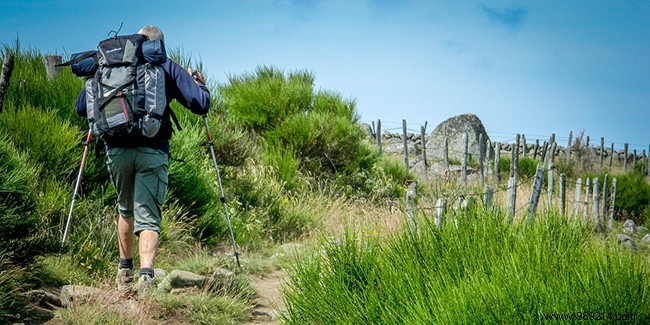
The time of retirement is approaching or you are already there and you plan to embark on the paths of Compostela. Doing all or part of this long journey is indeed a goal or a dream for many walking enthusiasts. However, some are reluctant to take on this challenge once they have retired, when the opportunity is ideal. Why do the Camino de Santiago at this age? How to do it when you are a senior? How long to leave? Our answers in this dossier.
When you plan to embark one day on the way to Compostela, it is not always easy to find enough time when you are active. But once you retire, you have all the time you need to organize yourself. No more scheduling constraints! You can decide at your leisure to leave for a week, a month or more to do all or part of this path, with more or less rest stages.
Of course, you can decide to go alone and stay that way until the end of this adventure. But the Camino de Compostela is also known for the encounters it allows for. Walkers, inhabitants of the path, hospitallers, hosts… along the way, mutual aid, sharing and solidarity are in order. Enough to restore courage, support each other and share the wonder of such a challenge with others and to maintain some beautiful relationships.
The Camino de Santiago crosses multiple regions, landscapes and cultures, it offers to see a very varied and pleasant flora and fauna to observe. These unique discoveries are an opportunity to enrich one's daily life and to take the time to take advantage, once retired, of this wonderful nature and this unique change of scenery, to cross villages and territories in which one would not have returned, or to make detours by heritage sites that one would never have visited.
Setting off on the Compostela paths, to cover it all or just a few kilometres, is a real challenge. In retirement, this type of adventure is particularly stimulating. It allows you to give yourself a goal, to occupy yourself usefully and healthily, to prove to yourself that you are still capable of doing great things. As the days go by, following this path means putting on your shoes and continuing to the next stage. It is also a good way to take care of your health, because walking is recognized for its multiple benefits (improved breathing, preservation of the heart, better quality of sleep, toning of the body, prevention and reduction of hypertension and many pains, etc.).
Traveling the Compostela paths also means taking time for yourself and above all taking the time to find yourself. Retirement is the perfect time to turn a page of assets and write a new chapter in your life. It's a good way to be more attentive to yourself, to listen to yourself, but also to abandon the routine to focus on your body and mind. Compostelle is the solution for many to meditate, to make big decisions, to take stock of their lives, to return to the essentials and to carry out a kind of spiritual retreat which allows the body and the spirit to grow.
Embarking on this adventure after 60 is entirely possible, but it is important to do it well. Here are our tips.
Of course, you don't launch yourself into such a challenge without consulting your doctor. After 60 years and even before, it is preferable to take stock with this one and to obtain his agreement to start.
It is imperative to stay in tune with your body and your abilities. So take the time to prepare your itinerary well. You have time to do all or part of the journey, so plan substantial rest times and reasonable daily stops. On average, it takes 20 to 25 km between two stages. But when you are not used to walking so much, it is better to plan several days to cross one and thus avoid injuries that may force you to stop your journey there.
Also plan full days of rest to allow your body to recover. Indeed, repeated walking is very tiring, it should not be forgotten. Rest is the key to keep walking! Finally, opt for safe and secure circuits.
If complete rest puts you off, take advantage of the breaks to visit the villages you pass through and the monuments you come across on your way. You'll find a whole bunch of underrated treasures there.
When you walk along the Compostela paths, you generally carry your essentials in a backpack. When you are old, it is better to lighten it as much as possible so as not to tire your back. So be content with the essentials, you will find something to eat, sleep, wash and wash your things throughout the journey.
In addition, it is possible to take advantage of the services of a broom wagon which picks up pilgrims who need it. This is not a sign of weakness, but a support that you have to know how to take advantage of when the need is there, especially when the body no longer follows.
When you embark on the paths of Compostela, you can decide to devote more or less time to it. When you are retired, you can free yourself more easily, but it is also important to pay attention to your abilities.